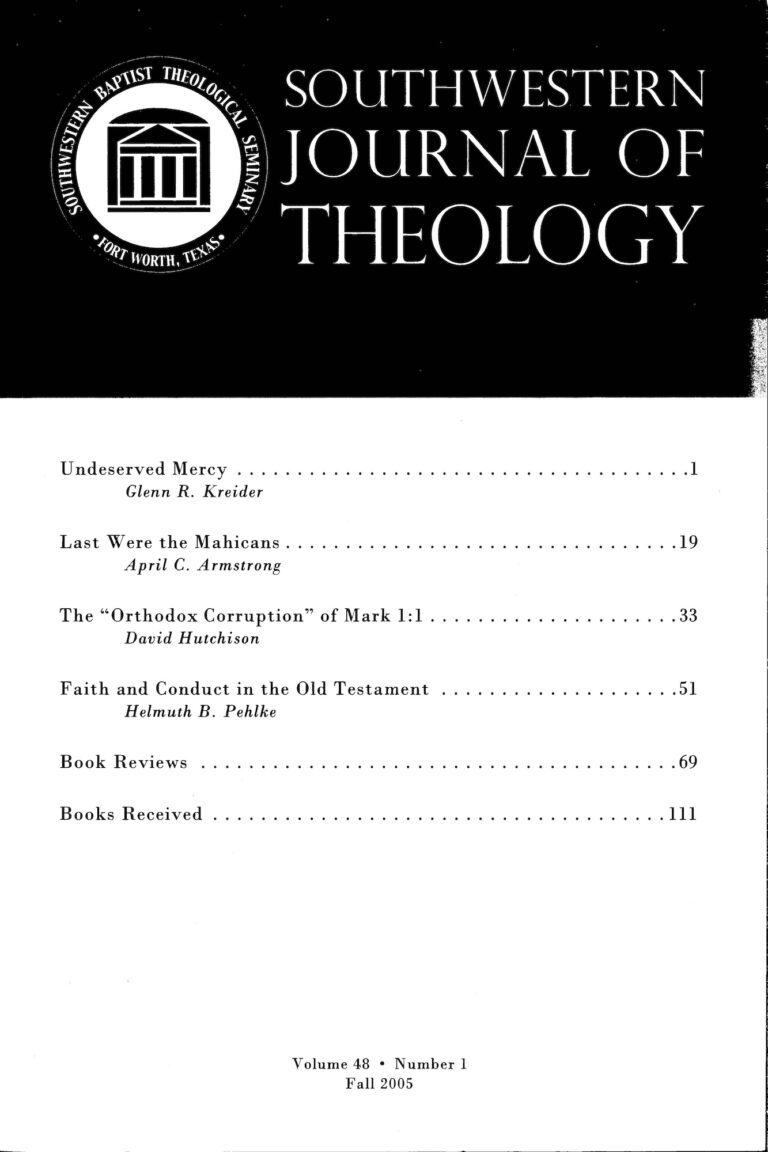
Southwestern Journal of Theology (48.1)
Southwestern Journal of Theology
Volume 48, No. 1 - Fall 2005
Editor: Paige Patterson
The New American Commentary. By Kenneth A. Mathews. Broadman and Holman, 2005. 960 pages. Hardcover, $32.99.
This comprehensive effort is the second part of the author’s work on the book of Genesis. Despite the magnitude of the task and the excellence of the works which have preceded his, Mathews has produced an invaluable resource for anyone looking for a scholarly, conservative, thorough, and exegetical approach to the first book of the Bible.
The outline of the book is simple; organized along the תוֹלְדוֹת units of Genesis. The sections highlight the history and significant events in the lives and families of Abraham, Ishmael, Isaac, Esau, and Jacob. This includes an honest assessment of both the strengths and weaknesses of the biblical characters.
The work demonstrates an excellent and thorough discussion of the language of the text throughout. Mathews carefully illustrates the intricacies and nuances of the Hebrew, such as the meanings and interpretations of words, word plays, and structure, as well as the themes, motifs, and critical issues that derive from them. Moreover, he frequently includes excurses that are helpful and timely to the discussion. The author presents a comprehensive analysis of the scholarship and critical issues related to the study of Genesis. He underscores the value of archeology and highlights its importance to the understanding and validation of the text.
Most major sections of the commentary begin with a section entitled “Composition.” Here Mathews discusses the compositional questions and identifies the primary views, traditions, theories, and literary issues pertinent to that pericope. Next, the author addresses the questions with clear and compelling analysis. He deftly debunks the theories and assumptions against a unified composition of the text. For example, Mathews includes a detailed discussion of the Documentary Hypothesis and addresses each issue before presenting his own cogent justification for “an author responsible for the whole” (87).
One of the strongest assets of this work is Mathews’s consistent and convincing representation of the maximalist view of the witness of the Hebrew text. He clearly maintains that historicity is vital to the inter-pretational truth of scripture, contending that “it is indefensible theologically that the faith of the Fathers is viable even if the Fathers were only a literary construct” (26).
Though clearly a scholarly work, this book is not without practical application for the church and Christians today. Additionally, the frequent footnotes and selected bibliography provide ample resources for those craving additional study.
In the end, Mathews passionately and persuasively argues for what many have considered the untenable positions of the inerrancy of the text, unity of authorship, and historicity of the characters and narratives. Students, teachers, pastors, and anyone interested in the study of scripture should add this book to their libraries and benefit from its instruction.





